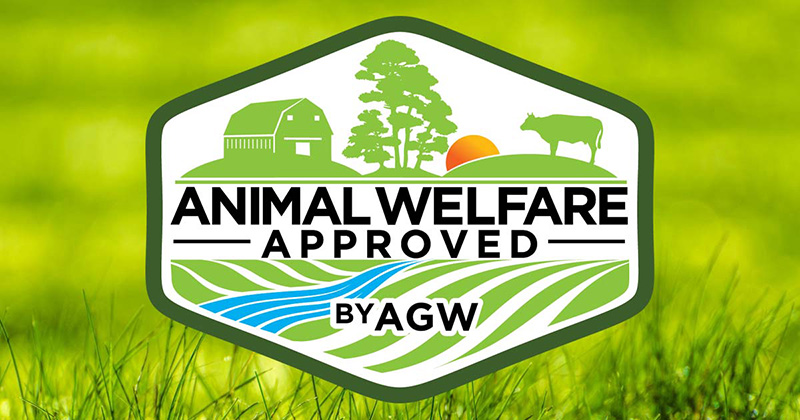
Dear Eartha, I want to start purchasing more humanely-raised meat for my family, but I’m not sure where to begin with all the options, certifications, claims, etc. on labels out there. I’m a little overwhelmed. Can you help?
I think this is a question we’d all like a solid answer to, especially when we’re rushing to get in and out of the grocery store after work. I’m happy to help as this issue is on the minds of us focused on sustainable living, and many of us do want to be educated consumers.
The short answer to your question is to look for Certified Animal Welfare Approved by A Greener World or American Grassfed Association Certified. Let me explain. As an increasing number of consumers, like you, care about where their products come from, food producers respond with an increasing number of claims and certifications. Labels can be misleading and even make things more complicated. Why do you think there are several certifications to choose from? Because there is a huge variety of certification standards. Not all are created equal, so let’s break them down. We’ll address certifications first based on the amount of welfare they claim for farm animals and then discuss some deceptive terms you’ll encounter.
THE MOST HUMANE FOOD LABELS
If you want a hands-down, always-honest product claiming humane treatment, look for Certified Animal Welfare Approved or American Grassfed Association Certified. These animals spend most, if not all, their lives with access to a pasture and other natural settings. They have minimum space requirements and companies are prohibited from clipping beaks or docking tails. These farmers use no hormones or antibiotics. Unfortunately, less than 1 percent of animals in the U.S. are raised in such conditions, according to the American Welfare Institute.
THE SOMEWHAT HUMANE
Some labels sound great, but it’s worth educating yourself on the details. These labels include Certified Humane, Food Alliance Certified, American Humane Certified, Global Animal Partnership, and USDA Organic. These farms sometimes permit the clipping of poultry beaks or the docking of tails, they may use feedlots and they often give animals no access to the outdoors. Most have minimum indoor space requirements and don’t allow the use of hormones or antibiotics.
These common certifications typically don’t have standards during transportation to slaughter, which can put a great deal of stress on animals. In short, these certifications are middle-of-the-road and should be viewed with a wary eye. It is worth mentioning that many companies are certified as USDA Organic, but those who care comprehensively about an animal’s well-being typically seek an additional certification, such as those listed as high welfare. Fifteen percent of U.S. farm animals are raised in medium-welfare situations, according to the AWI.
Also worth mentioning is that some certification programs, such as Global Animal Partnership found at Whole Foods, have different steps or grade levels of certification. Lower-level certifications allow beak clipping, tail docking, and confinement, while higher-level certifications do not.
WATCH OUT FOR DECEPTIVE TERMS
We’ve all seen claims on packaging, but typically these are not verified unless they have a certification like those listed above. The following terms are subjective and defined ambiguously by the USDA: raised without antibiotics, raised without hormones, natural, naturally raised, pasture-raised, grass-fed, free-range, sustainably-farmed, sustainable, humane, humanely raised and vegetarian-fed.
These terms are meant for farmers to make claims on certain aspects of animal husbandry and slaughter practices. What’s more, is that the USDA approves applications in-office with no site visits required. Packages with these claims usually will explain what it means to their farm in the fine print. If you care comprehensively about the welfare of the animals you are consuming, it’s worth seeking a certification — like the high-welfare examples — that encompasses all these practices and more.
Even after reading this guide, you’ll probably run into some confusing situations at the grocery store, so take your time to look around and find out which products meet your standards.
If you come across another label, like one from a state, finding out what it means is just a quick Google search away. Don’t forget that buying directly from a farmer is always the best option as you can ask questions and even tour the facility for yourself. Happy humane shopping and thanks for paying attention to where your meat comes from!


